
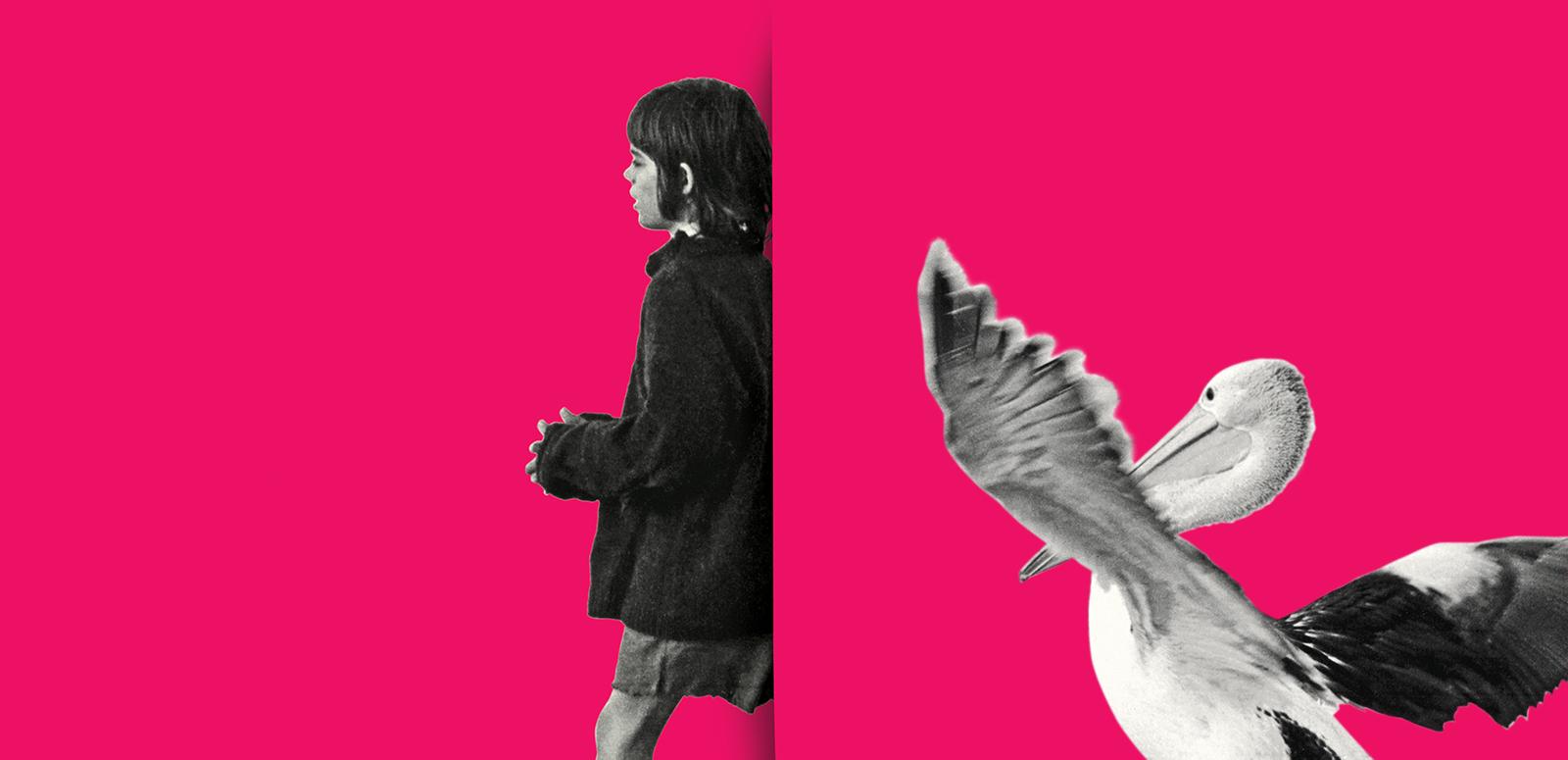
Annual report 2016-17
Strategic priority 2: Collecting and preserving
Developing and preserving our national collection is at the heart of what we do. We are driven by a curatorial model, relying on the expertise of our curators to interpret, analyse and apply their collection knowledge to collection development, programming and preservation priorities. We are also recognised internationally as a place of technical audiovisual preservation expertise, which underpins our ability to ensure that collection materials are preserved for future generations.
Outcome: The national audiovisual collection is developed and preserved to the highest curatorial standards.
| Objective | Initiatives/strategies to achieve against outcome and objectives, 2016–17 to 2019–20 |
Target 2016-17 | Result |
|---|---|---|---|
| Objective 2A Continue to develop a rich collection that represents the diversity of Australian culture |
2A.1 Revise and release the NFSA Collection Policy 2016–20 | Collection Policy approved and released | Achieved |
| 2A.2 Continue targeted collection development including analysis and deselection | 60,000 acquisitions (made in the reporting period)** | 46,723 | |
| 2A.3 Continue high-level advocacy for mandatory legal deposit for audiovisual material | Continued advocacy for mandatory legal deposit | Achieved | |
| Objective 2B Manage the collection to recommended international standards to ensure its digitisation and ongoing accessibility |
2B.1 Preserve the national audiovisual collection content through best practice storage and environmental conditions (passive preservation) | 230 years average collection lifespan* | 262 year average |
| 2B.2 Preserve the collection through active digitisation, format-shifting of content and data migration (active preservation) | 8,000 titles preserved and made accessible* | 14,825 | |
| 10% of the total collection digitised** | 6% | ||
| 2B.3 Accession the collection in-line with best practice to ensure the integrity of our data | 100,000 objects accessioned (in the reporting period)** |
98,860 | |
| Objective 2C Establish partnerships with the creative sector to increase awareness of the value of our audiovisual heritage and connect established creators and their work with emerging creators |
2C.1 Further develop mutually beneficial, long-term industry relationships to ensure maximum big screen exposure for Australian cinema | Five national partnerships | Achieved |
| 2C.2 Expand funding body partnerships to ensure lodgement of all new funded Australian moving image and sound productions with the NFSA. High level advocacy through industry forum to support this approach | Continued development of partnerships | Achieved | |
| 2C. 3 Expand current oral history and career interviews program with contemporary and influential film, broadcast and recorded sound identities | 60 oral histories collected | 162 oral histories |
Criterion source: Corporate Plan 2016–17 to 2019–20 page 7 and Portfolio Budget Statements (PBS) page 170
* Portfolio Budget Statements 2016–17 target
** Portfolio Budget Statements 2016–17 target and Department of Communications and the Arts (DoCA)
Key Performance Indicators (KPI)
Objective 2A
Continue to develop a rich collection that represents the diversity of Australian culture
2A.1 Revise and release the NFSA Collection Policy 2016–20
| Target | Result |
|---|---|
| Collection Policy approved and released | Achieved |
Criterion source: Corporate Plan 2016–17 to 2019–20 page 7
What we achieved
In May 2017 we launched our new Collection Policy. This policy sets out the guiding principles for the development, preservation and sharing of the national audiovisual collection:
- The NFSA exists to collect, preserve and share the national audiovisual collection. Noting the complex and fragile nature of audiovisual recording formats, we must ensure that we constantly evolve our methods of preserving and providing access to collection material. This includes both respecting the integrity and significance of traditional analogue material while ensuring that we adapt to – and prioritise – digital techniques and engagement.
- We must be accountable to history, ensuring that the collection is relevant to the Australian social and cultural context, acknowledging the diversity and multicultural nature of the Australian community and respecting and adhering to the inherent rights of Australia’s First Peoples to maintain, control, protect and develop their cultural heritage.
- Development of the national audiovisual collection is driven by curatorial principles, including that the collection is accessible, interpreted and shared to form an ongoing part of the evolution of Australian culture.
- As part of the community of galleries, libraries, archives and museums (GLAMs), we actively align our activities – curatorship, preservation, collection management, documents and staff skills development – with best practice, applying the conventions, codes and protocols applied by national and international peak bodies.
- We work closely with our fellow GLAMs, supporting collaboration across all tiers of government. We take a leadership role in directing and coordinating initiatives and providing advice on best practice in Australia, the region and further afield.
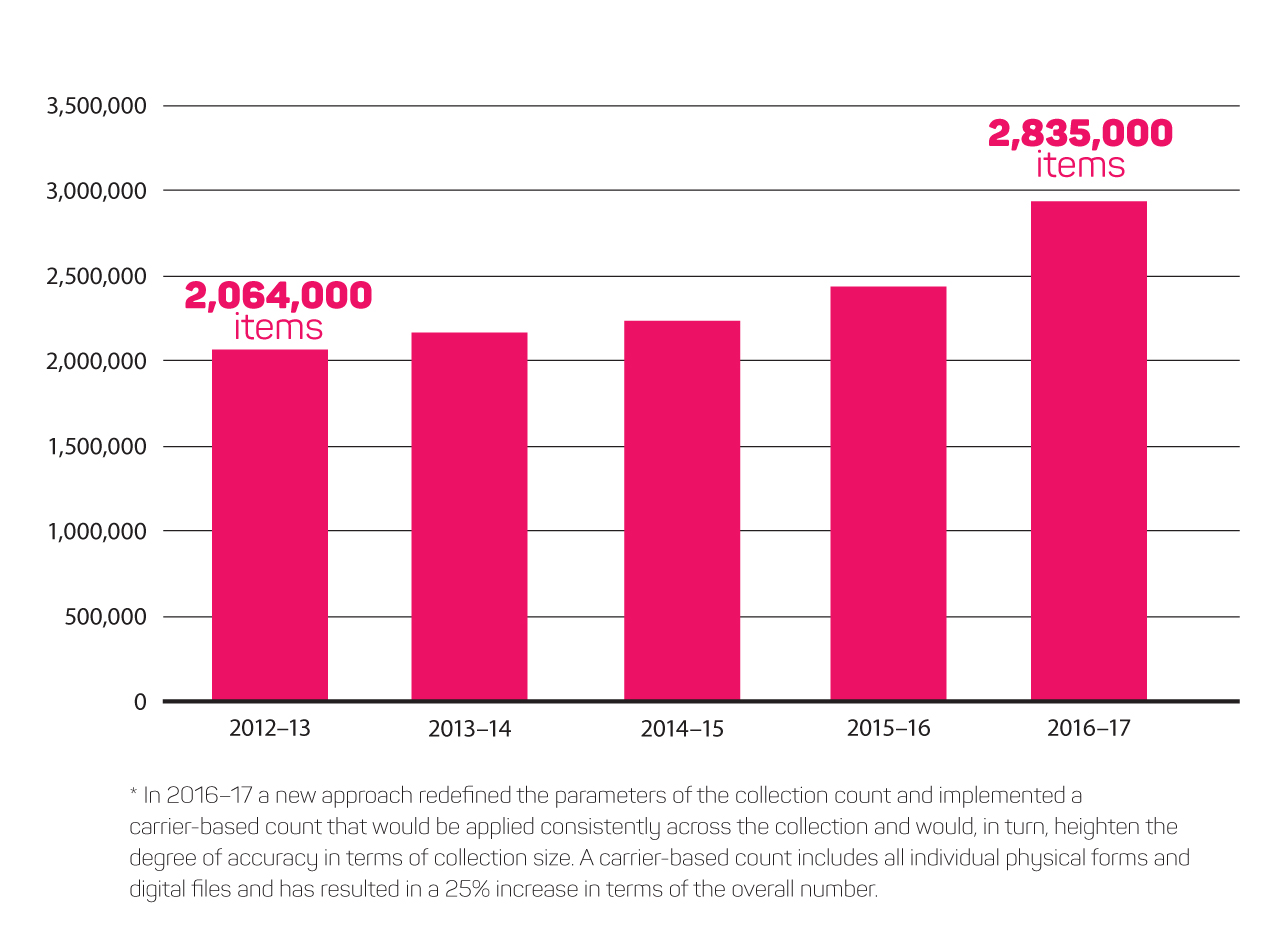
Figure 2: Collection growth, 2012–13 to 2016–17
2A.2 Continue targeted collection development including analysis and deselection
| Target | Result |
|---|---|
| 60,000 acquisitions (made in the reporting period)** |
46,723 |
Criterion source: Corporate Plan 2016–17 to 2019–20 page 7 and PBS page 170
*PBS 2016–17 target
What we achieved
The core of our activity is developing a national audiovisual collection to the highest curatorial standards. We hold 2.8 million collection items, including moving image, recorded sound and broadcast items, as well associated documents and artefacts.
We receive material into the collection through the following means:
- donation (material received free of charge)
- deposit through agreement with the owner
- formal agreements with screen funding agencies, requiring material to be lodged with the NFSA
- purchase
- bequest.
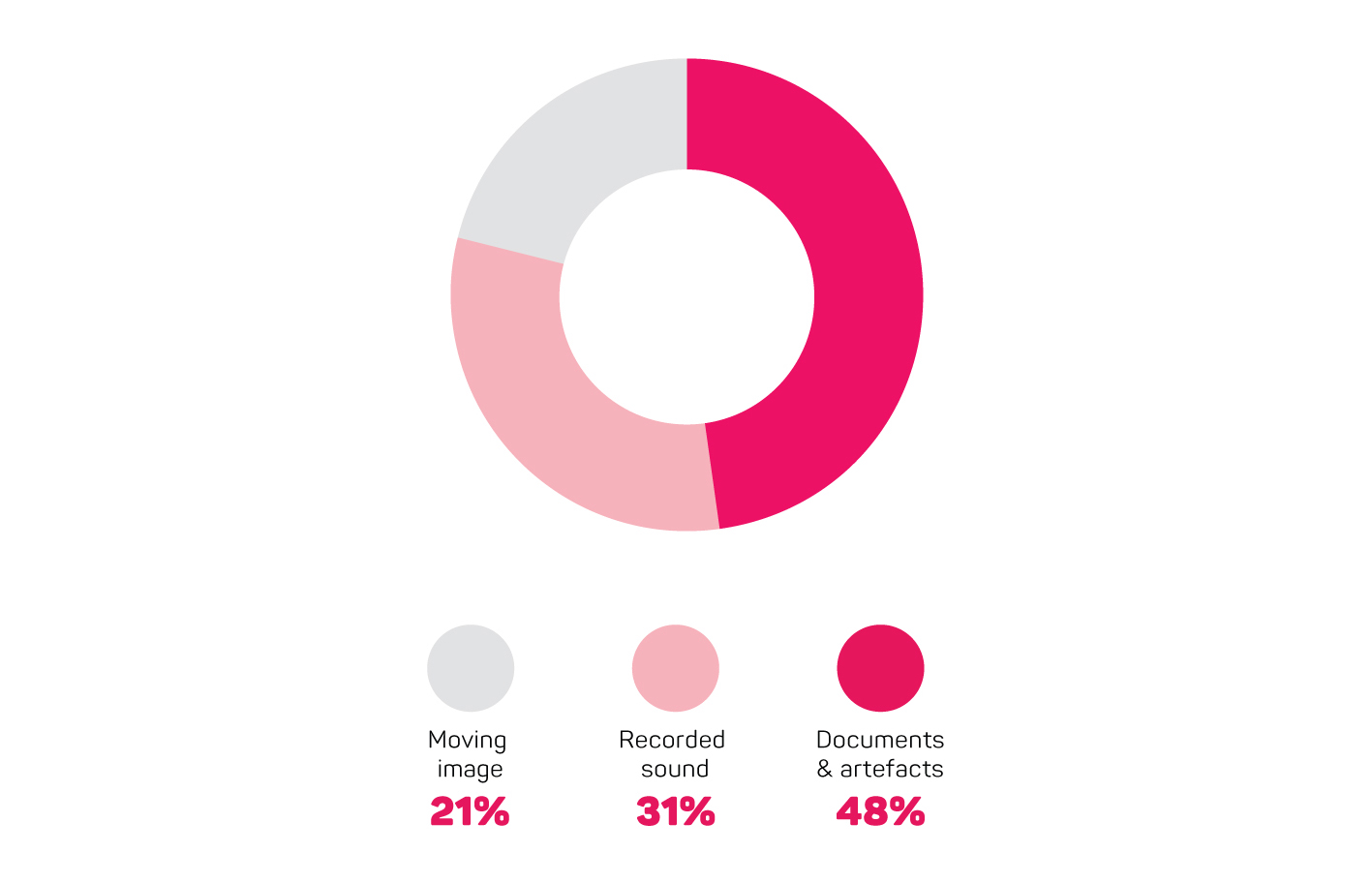
Figure 2: Collection growth, 2012–13 to 2016–17
During 2016–17 we did not achieve our overall acquisition target. This was in part due to the significant influx of acquisitions we received the previous year, totalling 92,457, which exceeded our 2015–16 target by 42,457. If viewed over the two-year period, we exceeded our combined acquisition target by 29,180.
There is a detailed listing of our acquisitions for the year in appendix 3 but highlights include:
Film
- Current film productions: Lion (Garth Davis, 2017), Ali’s Wedding (Jeffrey Walker, 2017), A Cinematic Life (Sally Aitken, 2017), Australia Day (Kriv Stenders, 2017), Lost Property Office (Asa Lucander, 2015), Last Drinks at Frida’s (Bjorn Stewart, 2017), Black As (David Batty, 2017), Fragments of Friday (Kacie Anning, 2017) and Skinford (Nik Kacevski, 2017)
- Australian retrospective features prints and/or pre-print elements delivered on 35mm: Crocodile Dundee II (John Cornell, 1998), My Brilliant Career (Gillian Armstrong, 1979), Cappuccino (Antony J Bowman, 1989), The Tracker (Rolf de Heer, 2002), Footy Legends (Khoa Do, 2006), Japanese Story (Sue Brooks, 2002), Three Days in Auschwitz (Philippe Mora, 2015) and Karl Marx (Bruce Petty, 1979)
- A rare cricket film from 1901: KS Ranjitsinhji and CB Fry Display Batting Technique on paper in the form of a Kinora reel, a proprietary format requiring a special viewer. Without a Kinora viewer in the collection, our curatorial and Digital and Media Operations staff improvised a mechanism and a short film was produced in the process (see the case study on page 29)
- Home movies from costume designer Norma Moriceau, and Les Thorp, lighting director for the JC Williamson theatrical company.
Sound
- A rare copy of Vic Simms’ 1973 album, The Loner, which is considered to be one of the first albums of Indigenous protest music, and was recorded by Simms when he was incarcerated in Bathurst Gaol in 1973
- Seven Pathé vertical-cut disc records published between 1909 and 1912, the recordings featuring Melbourne-born music hall star, Billy Williams
- The donation of 3,150 digital audio files by the Australian Music Radio Airplay Project.
Broadcast
- Deluxe Melbourne donated a collection of video masters. Highlights include Mick Jagger – Deep Down Under Live (1988), Sunbury (1972), Little River Band – Live At Expo ‘88 (1988) and assorted 1950s/60s footage compilations, including the opening of GTV9 Melbourne (1957)
- A selection of Neighbours episodes featuring guest appearances across the series which have included Molly Meldrum, Hamish Blake and Andy Lee, Lily Allen, Shane Warne, The Wiggles, Emma Bunton and Michael Parkinson
- Podcasts: Series 2 of the Game Changers podcast interview series with significant radio industry figures, including Hamish Blake, Matt Tilley, Amanda Keller, Fifi Box, Richard Stubbs and Tony Martin
- A 2UE archives collection on quarter-inch tape which included compilations of historically significant events from the 1950s to early 2000s, broadcasts by radio legends John Laws and Bob Rogers, and celebrity interviews with Don Lane (including the South Sydney song), Cilla Black, Connnie Francis, Ringo Starr, Normie Rowe, Troggs, Peter Finch and Elvis.
Documents and artefacts
- The Rolling Stone Australia Photographic Archive comprising over 5,000 photographic prints and transparencies used by Rolling Stone Australia from the early 1970s onwards
- Eleven Cinema Art Film posters that we purchased from Josef Lebovic, including The Wolves of the Underworld (George A Cooper, 1933), The Primrose Path (Harry O Hoyt, 1925), and The Squire of Long Hadley (Sinclair Hill, 1925)
- Documentation relating to significant Indigenous musicians and songwriters, including Archie Roach, Kev Carmody and Tiddas
- Black-and-white publicity photographs of key silent film actors, including Louise Lovely, Sylvia Breamer, Enid Bennett and Dorothy Cumming.
CASE STUDY:
Bringing 1901 Cricketers Back to Life
In 2016 we were surprised and excited when cricket historian, Glenn Gibson, donated a film reel for the earliest home entertainment system ever produced, the Kinora. The reel features two famous cricketers, Kumar Ranjitsinhji GCSI GBE (also known as Ranji) and Charles CB Fry. They played for Sussex and England in the early 20th century and footage of them is extremely rare.
The Kinora works on the same principle as a flipbook, rapidly displaying one still image after the other to create the illusion of movement. Instead of being printed on the pages of a book that the user flips manually, Kinora’s mechanical system allows for a much higher image quality. The photos are printed on a reel which is placed in a player, and the user turns a crank handle to view the images.
Kinora reels used to run for a maximum of 30 seconds and could be purchased or rented for home use. They covered everything from everyday activities to historical events, as well as moving images of sportspeople and entertainers of the day. You could make reels of family members at photographic studios, and from 1908 you could purchase a camera to make your own Kinora home movies. As the popularity of cinema increased, interest in Kinoras waned. Following a factory fire in 1914, Kinora ceased production.
When we received the cricket Kinora reel, we had not been able to acquire a working Kinora machine to play it. Instead, our experts were able to create a device to replicate the mechanism of the original Kinora player, by photographing each of the 465 frames and animating them to create a 19-second film clip.
The final film is close to the original and depicts Ranji and CB Fry batting, most likely during a training session at the Sussex ground in Hove in 1901. It is among the earliest cricket films to be preserved. Other Kinora reels in our collection show a woman dancing, the launching of a lifeboat and a man reading a letter.
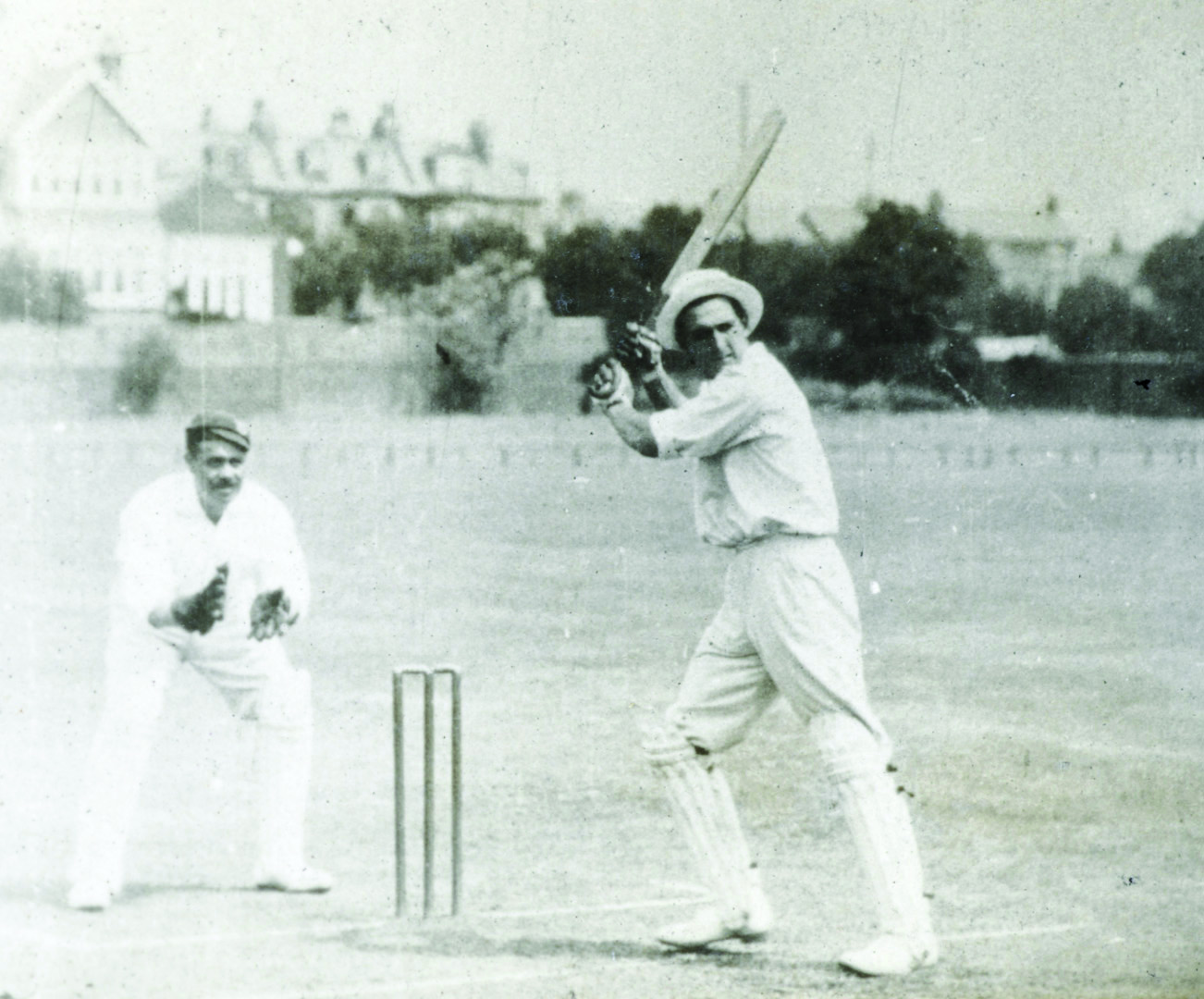
C.B. Fry (batting) & Sussex all rounder, Frederick Parris, in the 1901 Kinora reel brought back to life by NFSA
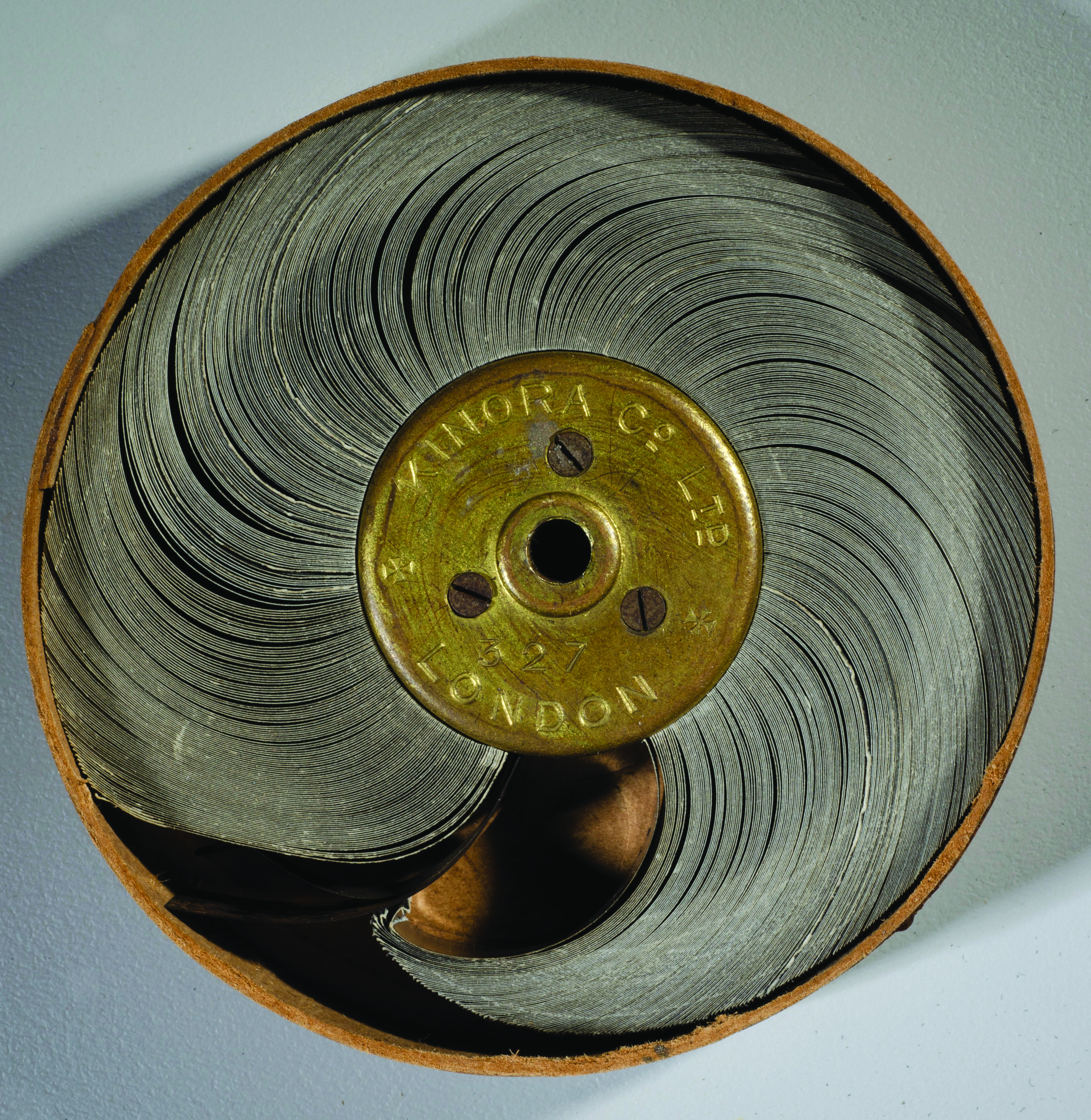
A 1901 reel of the world’s first home movie entertainment system, the Kinora
| Acquisition by type | Result |
|---|---|
| Feature length films | 145 |
| Short films | 259 |
| Small gauge films | 182 |
| Documentaries | 501 |
| Television works | 5,821 |
| Recorded sound works | 7,279 |
| Radio works | 4,518 |
| Oral histories | 162 |
| Documents and artefacts | 27,856 |
| Total number of acquisitions | 46,723 |
2A.3 Continue high-level advocacy for mandatory legal deposit for audiovisual material
| Target | Result |
|---|---|
| Continued advocacy for mandatory legal deposit |
Achieved |
Criterion source: Corporate Plan 2016–17 to 2019–20 page 7
Legal deposit is a statutory requirement for specified published material to be deposited with an assigned repository. For example, legal deposit requires publishers to deposit printed and digital publications with the National Library of Australia. It does not currently exist in Australia for audiovisual production but it has the potential to provide the NFSA with a more comprehensive view of Australia’s audiovisual output and to support greater efficiencies when acquiring material for the collection. If and when applied, we support a selective, curated approach.
In 2016–17 we continued consultation on this topic, with a view to developing a workable proposal that can be presented for consideration.
Objective 2B
Manage the collection to recommended international standards to ensure its digitisation and ongoing accessibility
2B.1 Preserve the national audiovisual collection content through best practice storage and environmental conditions (passive preservation)
| Target | Result |
|---|---|
| 230 years average collection lifespan* | 262 years average |
Criterion source: Corporate Plan 2016–17 to 2019–20 page 7 and PBS page 170
*PBS 2016–17 target
What we achieved
Drawing on international best practice we set the environmental conditions (both in terms of temperature and relative humidity) to meet the storage requirements for the long term and sustainable preservation of the national audiovisual collection.
In 2016–17 we achieved an average collection lifespan of 262 years. This represents an increase of 13.9% over our average of 230 years.
Our estimate of 230 years is calculated using the
Time Weighted Preservation Index – methodology developed by the Image Permanence Institute, Rochester University, USA. This measure estimates the average collection lifespan using three elements: the collection storage environmental conditions in terms of temperature and relative humidity, the format of the carrier, and the element of time. This provides a qualitative measure that estimates the collection lifespan in our storage facilities.
As part of the development of the NFSA Property Strategy (see objective 5D.1) we completed a comprehensive Collection Storage Report surveying the existing and future needs of our collection storage. This provided a foundation for storage capacity planning and ongoing monitoring requirements.
In 2016–17 we successfully completed two major collection relocation projects within our storage facilities:
- We relocated over 70,000 documentation items from the Acton 1 vault to improved environmental storage at Mitchell. Many of the items were relabelled and repackaged as part of the project, and an additional 9,000 carriers were accessioned.
- We transferred our duplicate colour film collection of 6,700 items to our Mitchell 1 facility. These films had been stored at the National Library of Australia vaults due to internal cold storage pressures. Our new in-house storage arrangements represented substantial savings in leasing costs.
2B.2 Preserve the collection through active digitisation, format-shifting of content and data migration (active preservation)
| Target | Result |
|---|---|
| 8,000 titles preserved and made accessible* | 14,825 |
| 10% of the total collection digitised** | 6% |
Criterion source: Corporate Plan 2016–17 to 2019–20 page 7 and PBS page 170
*PBS 2016–17 target
**PBS 2016–17 target and DoCA KPI
What we achieved
In 2016–17 we exceeded our target with 14,825 titles preserved and made accessible.
Changes in technology present a range of preservation opportunities and challenges for us. For the past several years, we have been gaining the necessary specialist skills and implementing the changes to infrastructure and equipment to transition to full-scale digital preservation workflows. At the same time, we need to maintain our capacity to preserve through analogue processes for as long as sustainable. Finding an effective balance between analogue and digital moving image operations has seen a reduction in the very labour-intensive photochemical film preservation process, which has increased the resources available for film digitisation.
The last quarter of 2016–17 saw a significant structural change as our Preservation and Technical Services evolved into the new Digital and Media Operations team. This reflects the transition of the core business responsibilities from the traditional analogue-based operations to digital platforms. This process involved the defining and refining of traditional workflows and the identification of efficiency gains. Strong initial results have underpinned the planned increase in preservation targets for 2017–18, with further increases in subsequent years expected.
Upgrades included:
- new systems supporting an increased focus on film digitisation with expanded scanning capabilities to include 4K 35mm, as well as increased distribution and access workflows for the newly created media file
- increased collaboration across the Digital and Media Operations team to develop integrated workflows and processes and reduce double handling
- procurement of purpose-built video ingest stations to increase capacity
- additional audio capture equipment required to manage large volumes of media.
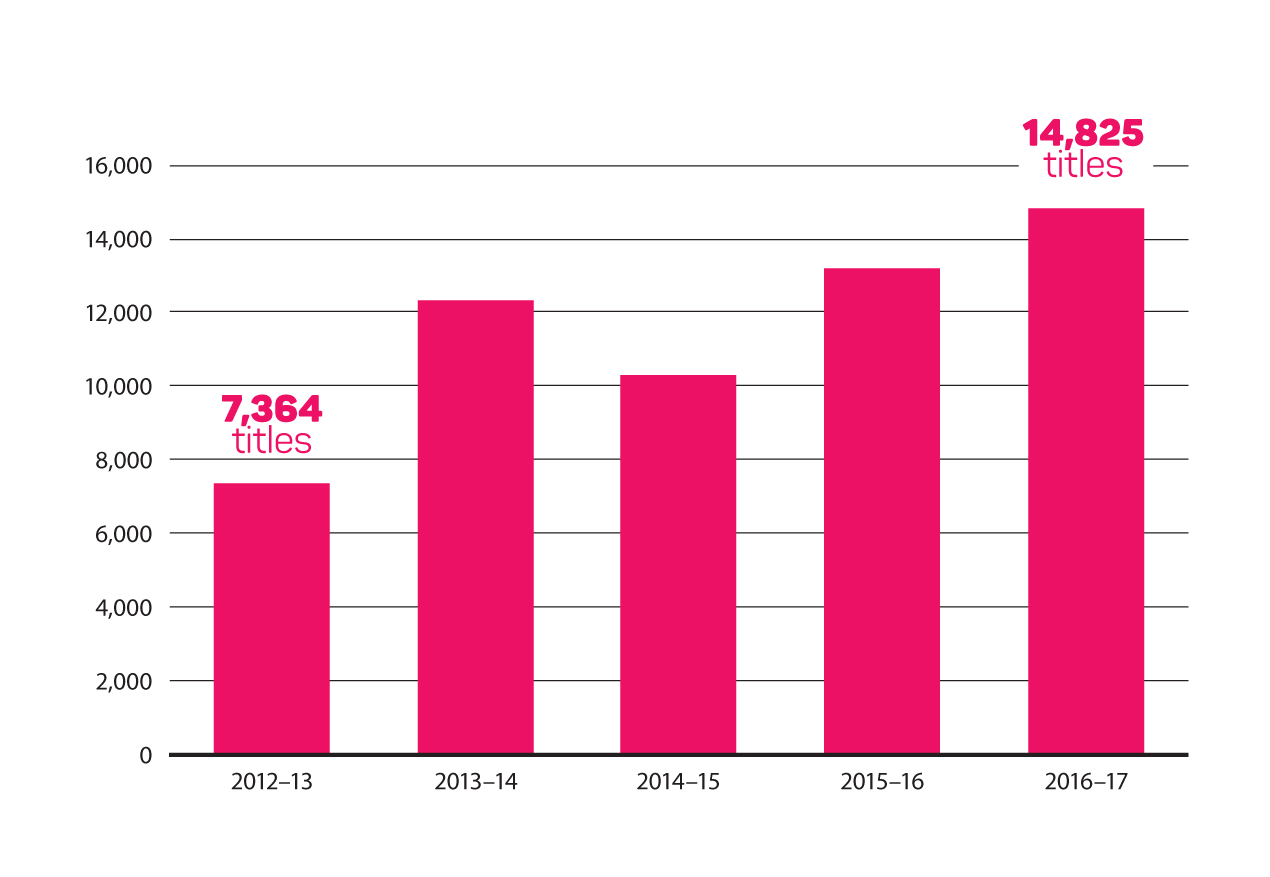
Figure 4: Preservation of audiovisual titles, 2012–13 to 2016–17
2B.3 Accession the collection in-line with best practice to ensure the integrity of our data
| Target | Result |
|---|---|
| 100,000 objects accessioned (in the reporting period)** |
98,860 |
Criterion source: Corporate Plan 2016–17 to 2019–20 page 7 and PBS page 170
** PBS 2016–17 target and DoCA KPI
What we achieved
Over the past several years we have consistently exceeded our accessioning target. This increase is largely the result of an increase in digital acquisitions and the development of more effective ingest and metadata capture in our collection management system, Mediaflex. These automated accessioning processes enabled us to realistically double our annual target from 50,000 to 100,000 for 2016–17.
We almost reached this ambitious new target with a total of 98,860 works accessioned (catalogued) in 2016–17. Digital accessioning continues to dominate, representing 73.19% of this total. While this reflects the changing nature of the collection, it also brings to light the continued effort required to accession physical objects which cannot be as extensively automated as digital works.
Objective 2C
Establish partnerships with the creative sector to increase awareness of the value of our audiovisual heritage and connect established creators and their work with emerging creators
2C.1 Further develop mutually beneficial, long-term industry relationships to ensure maximum big screen exposure for Australian cinema
| Target | Result |
|---|---|
| Five national partnerships | Achieved |
Criterion source: Corporate Plan 2016–17 to 2019–20 page 7
What we achieved
The NFSA Restores project has steadily increased the number of high-quality Digital Cinema Packages of classic Australian film titles available for cinema exhibition. This has enabled us to extend formal arrangements with key film festivals in Australia to premiere important film restorations. These festivals include the Sydney Film Festival, the Melbourne International Film Festival, the Adelaide Film Festival and the Canberra International Film Festival. In addition, we provide access to restorations for the renowned Pordenone Silent Film Festival in Italy, and we are negotiating screenings at multiple archival venues in the United States.
2C.2 Expand funding body partnerships to ensure lodgment of all new funded Australian moving image and sound productions with the NFSA. High level advocacy through industry forum to support this approach
| Target | Result |
|---|---|
| Continued development of partnerships | Achieved |
Criterion source: Corporate Plan 2016–17 to 2019–20 page 7
What we achieved
We have existing agreements with all the major screen government funding bodies in Australia, to ensure the lodgment with us of all new funded Australian screen productions. Funding bodies include Screen Australia, Film Victoria, the New South Wales Film and Television Office, Screen Queensland, ScreenWest and the South Australian Film Corporation. In 2016–17 we continued to review these agreements to ensure they provide flexibility in the current digital environment.
We also continued to develop agreements to harvest commercial and community radio podcasts with the Australian Radio Network, Southern Cross Austereo and Nova Entertainment, and with digital musical platforms such as Bandcamp and the Australian Music Radio Airplay Project.
2C. 3 Expand current oral history and career interviews program with contemporary and influential film, broadcast and recorded sound identities
| Target | Result |
|---|---|
| 60 oral histories collected | 162 oral histories collected |
Criterion source: Corporate Plan 2016–17 to 2019–20 page 7
What we achieved
Our substantial collection of oral histories continues to grow in order to capture the personal histories and narratives of individuals who have been part of Australia’s audiovisual industry. These oral histories provide personal, first-hand recollections of careers in film, television, radio or recorded sound that may otherwise be completely lost to future generations.
Our oral history program continues to support the collection areas and our online sharing platforms. In 2016–17 we exceeded our target, acquiring 162 oral histories which included 43 commissioned interviews and a donation of 119 interviews with advertising agency personnel recorded between 1940-1990.
There is a detailed listing in appendix 3 of the oral histories we acquired during the year but highlights include:
- Jack Charles (actor and Aboriginal Elder)
- Sue Maslin (producer)
- Hugh Riminton (journalist, foreign correspondent and TV presenter)
- Margo Nash (director/writer)
- Chris Masters (Gold Walkley Award-winning journalist)
- Michael McMartin (founder of Trafalgar Records in 1975 who formed Melody Management Pty Ltd in 1984 and has been manager of the Hoodoo Gurus and individual members since then)
- Steve Vizard (TV and radio presenter/comedian/producer/screenwriter)
- John Doyle aka Roy Slaven (comedian/writer)
- Trevor Graham (director/producer)
- Julia Zemiro (TV presenter)
- a collection of 119 interviews with advertising agency personnel recorded between 1940 and 1990, donated by Robert Crawford.
The National Film and Sound Archive of Australia acknowledges Australia’s Aboriginal and Torres Strait Islander peoples as the Traditional Custodians of the land on which we work and live and gives respect to their Elders both past and present.